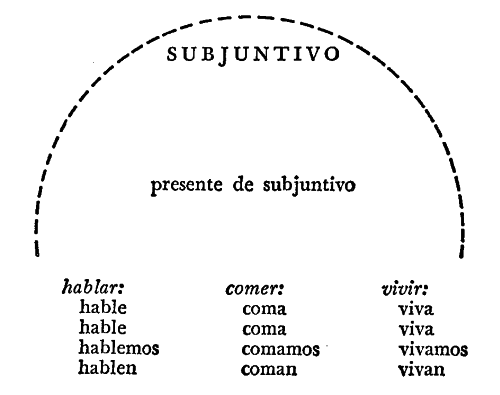Learning Spanish subjunctives? Read on for a comprehensive guide on how to remember the rules for the Spanish subjunctive…
The Spanish subjunctive is considered one of the most complicated and difficult rules of grammar in the Spanish language.
However it need not be so and you can utilize an easy technique to remember them. To make your learning experience more rewarding you should concentrate on the basic elements of the Spanish subjunctive.
Explanation of the Spanish Subjunctive
The first point to remember is that the Spanish subjunctive is not a tense. This is misconstrued by many people. It is however a mood, which is conveyed regarding an action.
The tense in grammar refers to the action taking place in the past, or the present or what might happen in the future. The mood simply shows how the speaker feels about a particular action.
It’s interesting to note that this aspect of the subjunctive mood is very rarely utilized in English. However, in the Spanish language its use is very common, hence there is a need to understand this grammatical rule very clearly.
Examples of the English Subjunctive
In a sentence ‘a doctor recommended that he take the pill with meals’, the subjunctive conjugation is ‘he take’. In a sentence like ‘it’s required by law that you be 18 and above to vote’, the subjunctive conjugation is ‘you be’. Another explanation is in the sentence ‘if I were a rich woman, I wouldn’t have to go to office’, in which case the subjunctive conjugation is ‘I were’.
Examples of the Indicative Mood
Generally the verb tenses are utilized to depict the indicative mood which gives you factual information in a certain and objective way.
For example a statement like ‘Usted va al Lima en diciembre’ meaning you are going to Lima in December is reporting the fact that the person is traveling to Lima in December.
Therefore it shows certainly that the verb traveling has been utilized in an indicative mood.
If you alter the same example slightly to say ‘No dudo que usted va al Lima en diciembre’, then you have added your feeling with the words ‘No dudo’ to the sentence which means ‘I don’t doubt that you are going to Lima in December’ thereby using the indicative mood to introduce certainty as an element.
This is done both in the first clause for the words ‘no dudo’ as well as in the second clause with the words ‘va’.
Spanish Subjunctive in The Second Clause
Elaborating on the same example with a slight change you can say ‘Dudo que usted vaya al Lima en diciembre’ which translates into the negative form of your previous statement and reads ‘I doubt that you are going to Lima in December’.
Here the speaker introduces an element of uncertainty with the words ‘dudo’ which means to doubt. Therefore the subjunctive mood is therefore used in the second clause only with the words ‘vaya’.
The subjunctive mood can be utilized to express things like doubt or uncertainty as well as subjectivity by using it in the second clause. An easy example to remember this is the sentence ‘I doubt that you are going to Lima in December’, which shows that it does not express certainty so you need to place the Spanish subjunctive in the second clause.
Difference between Indicative and Subjunctive Mood
The main difference between the indicative and the subjunctive mood is the difference between objectivity and certainty which is implied by the indicative mood and the possibility and subjectivity implied by the subjunctive mood.





